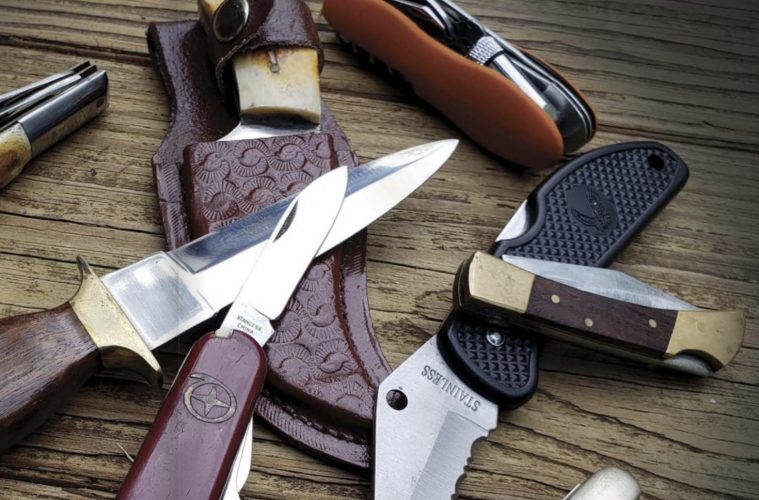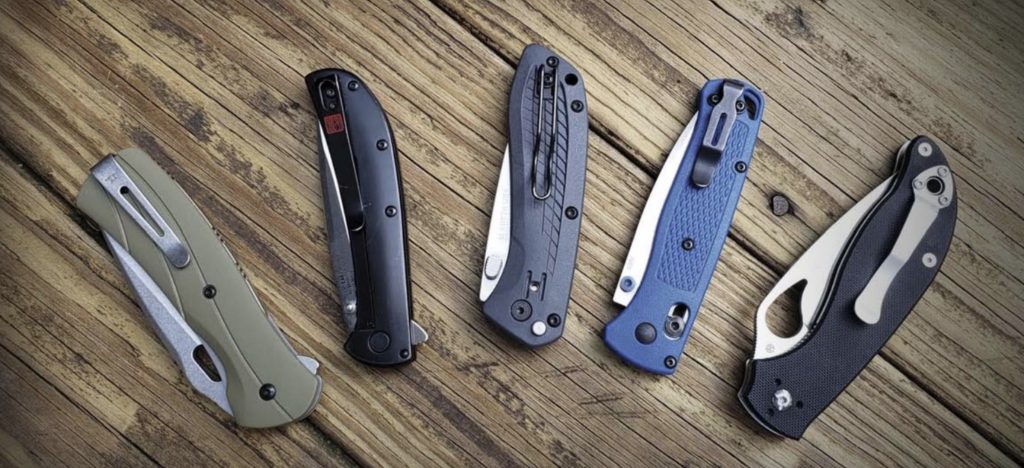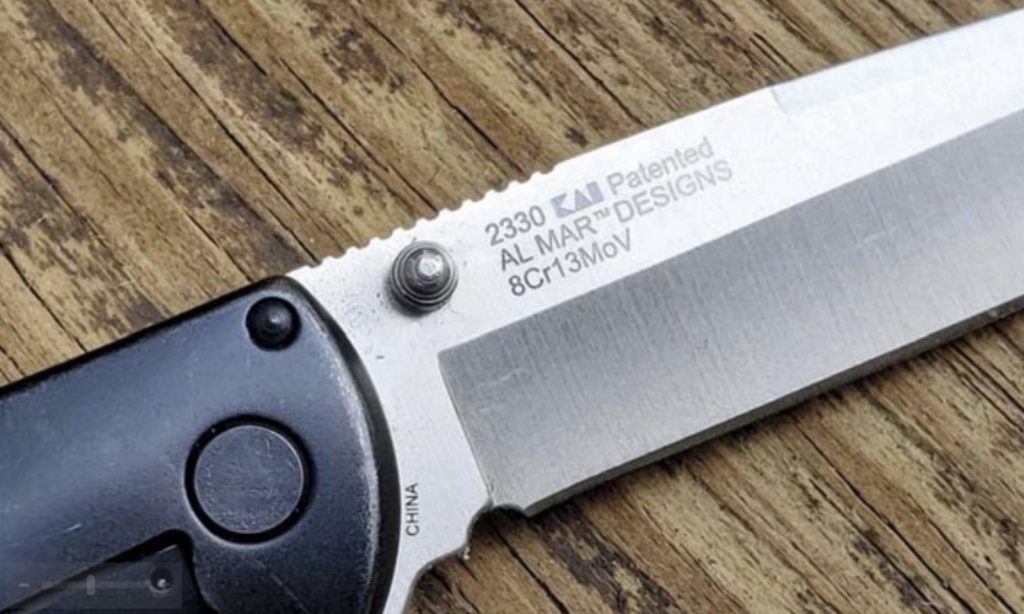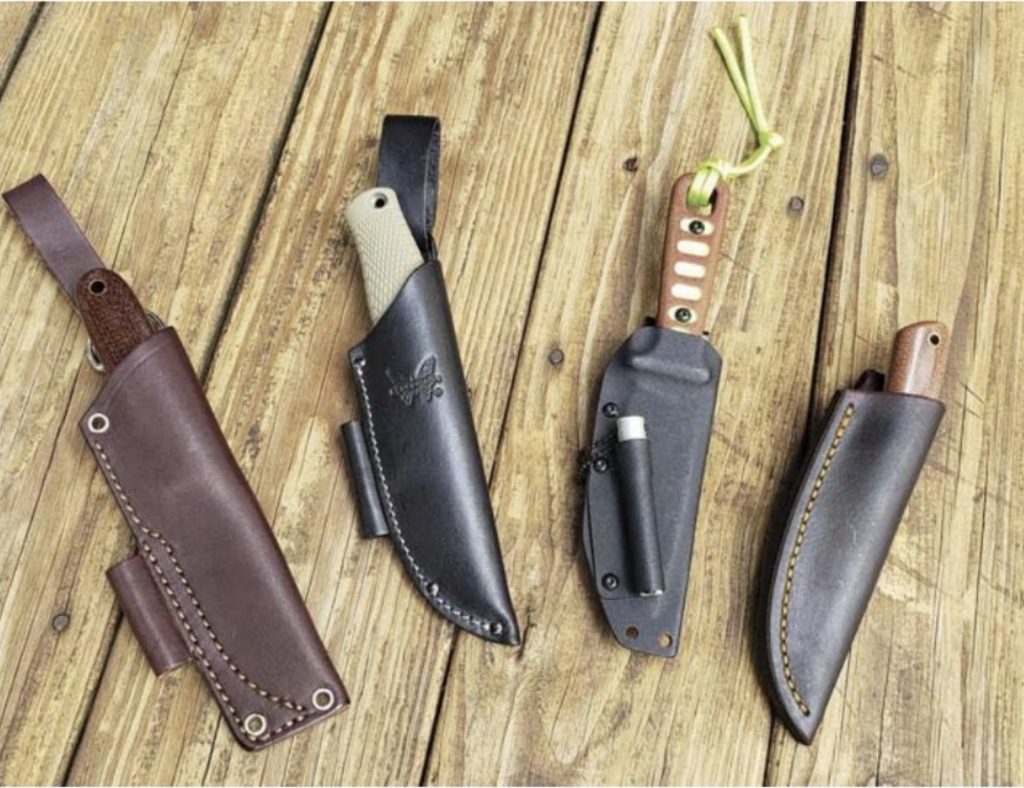By: Tim Stetzer
I’ve often said we live in a golden age of knife buying, with a diverse market, and more quality knife choices available than at any time in history. While that’s a great thing for someone in the market for a new knife, it can also be overwhelming. (Especially true if you’re new to the hobby.) I often get asked the questions, “What should I buy?” or, “Is Brand X or Model A, a good knife?” My answer usually is … it depends.
There are a lot of factors involved in buying a new knife, or when buying a knife for the first time. And before you know what you should buy, you need to figure out what you really need. I decided to reach out to some friends, both inside and outside the knife industry, to get their input. From the seemingly obvious to the more complex answers, here are the top 10 things to consider when making your knife purchase.
1. What is the knife’s purpose?
The reason you need a knife is the most important factors to help guide you to which knife you need. Are you looking for a hunting knife, or will it be more of an everyday carry (EDC) piece? Is it a tool for a specific job, or for use in your employment? It could also be something that you simply want with no intended use. There’s nothing wrong with just wanting something because it looks cool or you like it, but it’s wise to be aware of that when going into a purchase. If it’s a “just because” purchase, you may not be as concerned about the next nine tips.
2. Is the knife legal according to local and state laws?
I know this one can be a bit of a downer, but know your local laws. If you’re in doubt or confused, contact your local law enforcement agency. If you can’t actually carry the knife you want, then it serves little purpose to buy it. Worse yet, you don’t want to run into legal problems. Nothing ruins the joy of a new knife more than an arrest or a citation and the confiscation of your property.
3. What is your knife-buying budget?
Let’s face it — price matters. If you have a $50 budget, there’s no reason to look at $500 knives. Window shopping can be fun, but it won’t really help you decide what to buy. Knowing your budget and shopping within your means helps narrow down your choices. It also gives you a clue as to what to look for. Remember: A limited budget doesn’t mean you can’t get a good quality knife, but it may mean you need to be discerning. There are a lot of really cheap knives out there that will not only offer poor performance due to inferior materials, but also can be outright unsafe. I can’t even count how many cheapo folders I’ve seen over the years on which the lock fails to engage properly, or it breaks under only moderate use. It’s worth spending a few extra bucks to ensure your safety.
4. Will the knife be factory stock, or custom-made?
This decision may be the result of your intended budget or just your preferences. Many custom makers have unique styles or can offer things that production companies can’t. If you decide on a custom knife, do your research and find out the maker’s lead time and their terms and policies. Some want a deposit upfront, others want the full cost of the knife before they begin, and still, others don’t ask for anything until the knife is ready to be delivered. You must decide what you’re comfortable with prior to starting. Having a custom knife can be extremely fulfilling, but the trade-off may be higher costs and longer wait times than picking a factory stock knife off the shelf.
5. Do you want/need a fixed blade or folder knife?
Once you figure out the purpose of your knife, you may find you’re better served by one type or the other. The tough part is figuring out which works best for you. Does the convenience of a folder offset the inherent strength of a fixed-blade knife? Will you realistically carry a more cumbersome fixed blade as opposed to a folder that can be easily clipped to your pocket? The best knife in the world doesn’t do you any good if you leave it at home. It’s like the old concealed-carry argument as to whether a .380 in your pocket is better than the .45 ACP that you left at home because it’s too big. It’s a choice you have to make, but it’s definitely one to consider.
6. Does the type of knife blade steel matter?
Of course, the type of steel in your knife matters, but how much so really depends on you and your intended use. Ask yourself: Do I want, or need, carbon steel or stainless steel? Am I okay with frequent sharpening and touching up, or do I want steel with excellent edge retention? Most people say they want less maintenance and great edge retention, but that comes with a price. Will your budget support top-end steel like S35V, or are you in more of an AUS8 or 8cr13Mov price range?
Be leery of blades that aren’t marked, or that don’t have available information. If it’s just stamped “Stainless” it’s probably a low-grade 420J or similar steel that will likely dull quickly. The bottom line: It’s always a good idea to pick the best steel that your budget can afford, and one that suits your purposes. With that said, keep in mind that companies like Buck have been using basic stainless steel like 420HC with a good heat treat for decades. The vast majority of their customers are just fine with that knife blade quality, and they continue to go through life never knowing that they “need” the latest wonder steel.
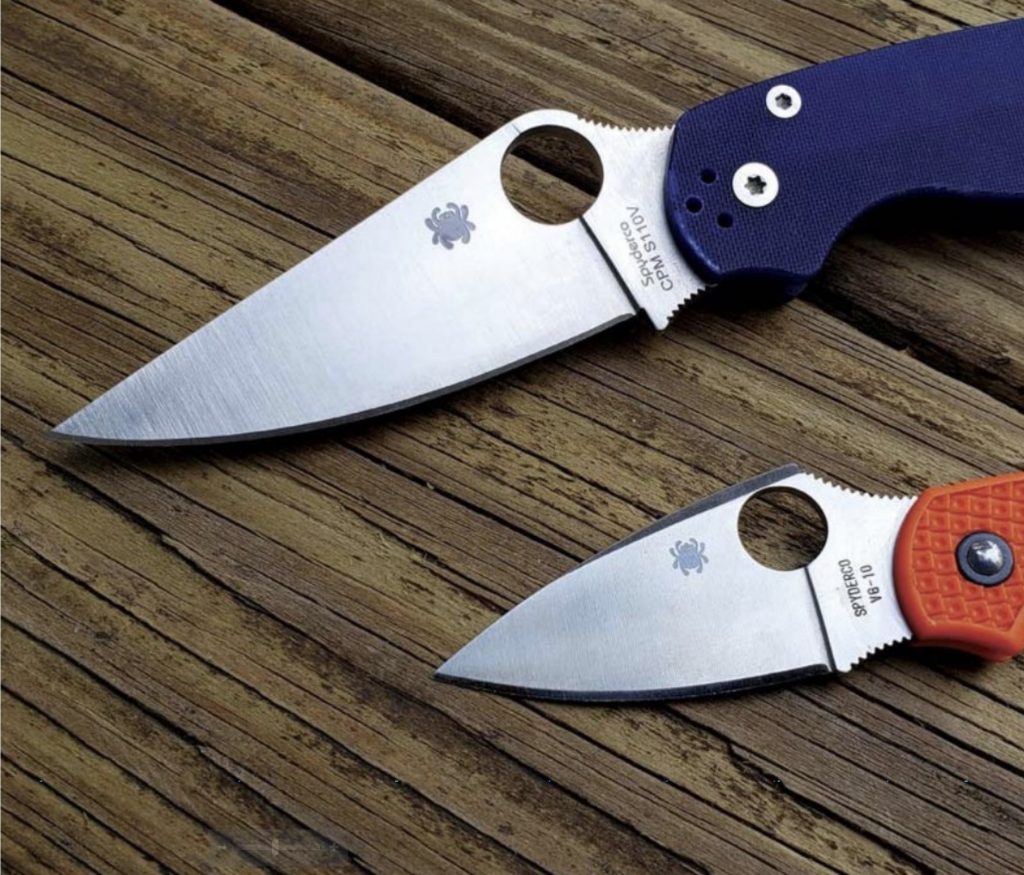
Better quality knives will have the steel type stamped on the tang, like these Spyderco folders.
7. Does the knife fit well in my hand?
It’s a best-case scenario when you can try a knife before you buy, or at the very least, handle one in the store. Ask yourself: Does this knife fit my hand? Is it too big, or too small? Does it have squared edges or corners that may cause hot spots during use?
Having a knife that doesn’t fit you, or that’s uncomfortable to use, directly translates into a knife that you won’t use much and that doesn’t benefit you in any positive way.
8. Do I need to buy something else to go with the knife?
One of the biggest cost-saving measures on fixed blade knives may be the sheath, so take a hard look at it. Some are really more blade covers than functional sheaths. Some custom makers don’t provide sheaths at all and leave it up to the customer. A number of very good leather and Kydex sheath makers out there can provide you with a quality sheath for your knife. Remember, this extra expense will factor into your knife budget, so don’t overlook this important aspect.
9. Will the knife hold up to wear and tear?
If you’re investing your money in a product, you want it to last. Make sure to consider the overall product, not just the blade steel. What kind of handle does it have? What other materials are used in the design? How are handle slabs attached?
Do some research, especially on products that have been out there for a while, and get some feedback from folks who already have the knife — it’s easy with an internet search. If the product is new to the market, you may not find much, but you can usually get an idea of the quality of a knife from feedback on similar items from the same maker or manufacturer.
10. Is it the real thing?
I sometimes hear people say, “I found a knife exactly like that, but for a lot cheaper.” That’s entirely possible, and there’s a reason for it. The clone market is strong, especially on some online auction sites. You get what you pay for — and that generally rings true in the knife world.
While you may find a knife that looks like the one you want, it’s invariably going to be made of cheaper materials, with lower production quality, and lacking a decent warranty, if any. It also hurts the legitimate designers, makers, and manufacturers who create innovative designs in the first place. A legit product has a warranty, and if you buy the real thing, the maker backs the product if something goes wrong.
A little homework goes a long way
It’s a buyer’s market when it comes to cutlery and, as a consumer, you’ll save yourself time and money by being educated about your intended purchase. Figure out what you want and need, and how much you want to spend. Then, enjoy shopping the amazing bounty of available blades.
By: Tim Stetzer
Visit us on Facebook at @KnivesIllustrated and
Instagram at @KnivesIllustratedMagazine

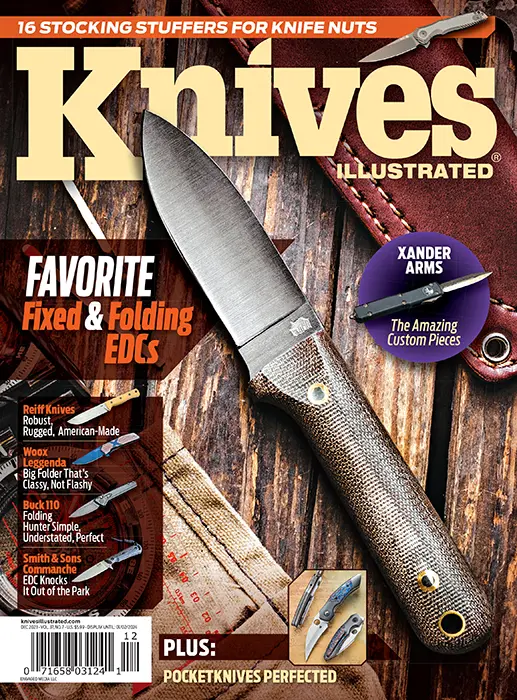 Subscribe / Back Issues
Subscribe / Back Issues